Iron deficiency anaemia
This toolkit is for healthcare professionals and provides information to identify and manage iron deficiency and iron deficiency anaemia.
Iron deficiency can present in any patient group. Causes include inadequate dietary intake, impaired absorption and blood loss, but can also be multifactorial.
Sometimes the patient may be asymptomatic, or symptoms may be overlooked due to other comorbidities, so it is important to:
- Be aware of at-risk groups
- Have processes in place for screening in pregnancy and prior to surgery
- Identify and correct the underlying cause – refer for further investigation as appropriate
- Treat with iron supplementation to replenish iron stores
- Provide patient information to support good nutritional intake and effective iron treatment
- Follow up with testing and monitoring
In this section
Pages in the 'Identify and manage anaemia' section
Infographics
These infographics are designed for you to use alongside appropriate text in presentations and educational resources. Please acknowledge the NHS Blood and Transplant Patient Blood Management team as the author.
Taking iron tablets
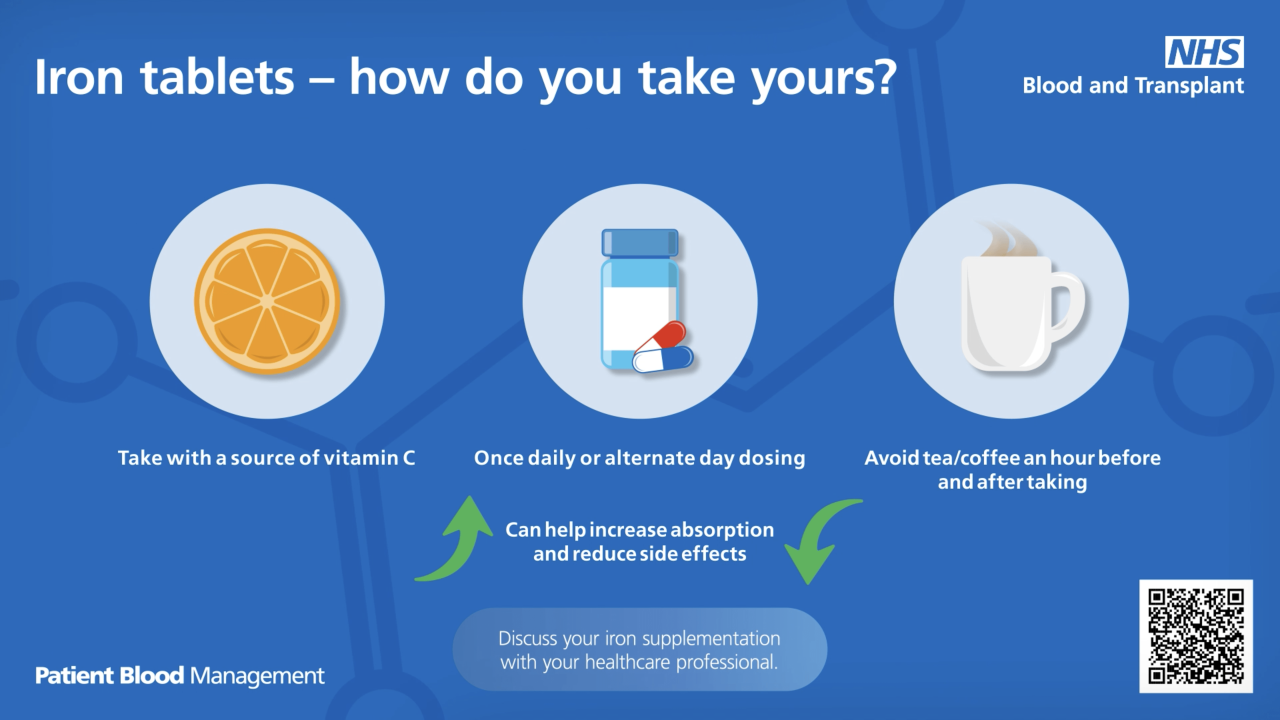
Text reads: "Iron tablets - how do you take yours?
- Take with a source of vitamin C
- Once daily or alternate day dosing
- Avoid tea/coffee before and after taking
Can help reduce side effects and increase absorption.
Discuss your iron supplementation with your healthcare professional."
Iron in your diet
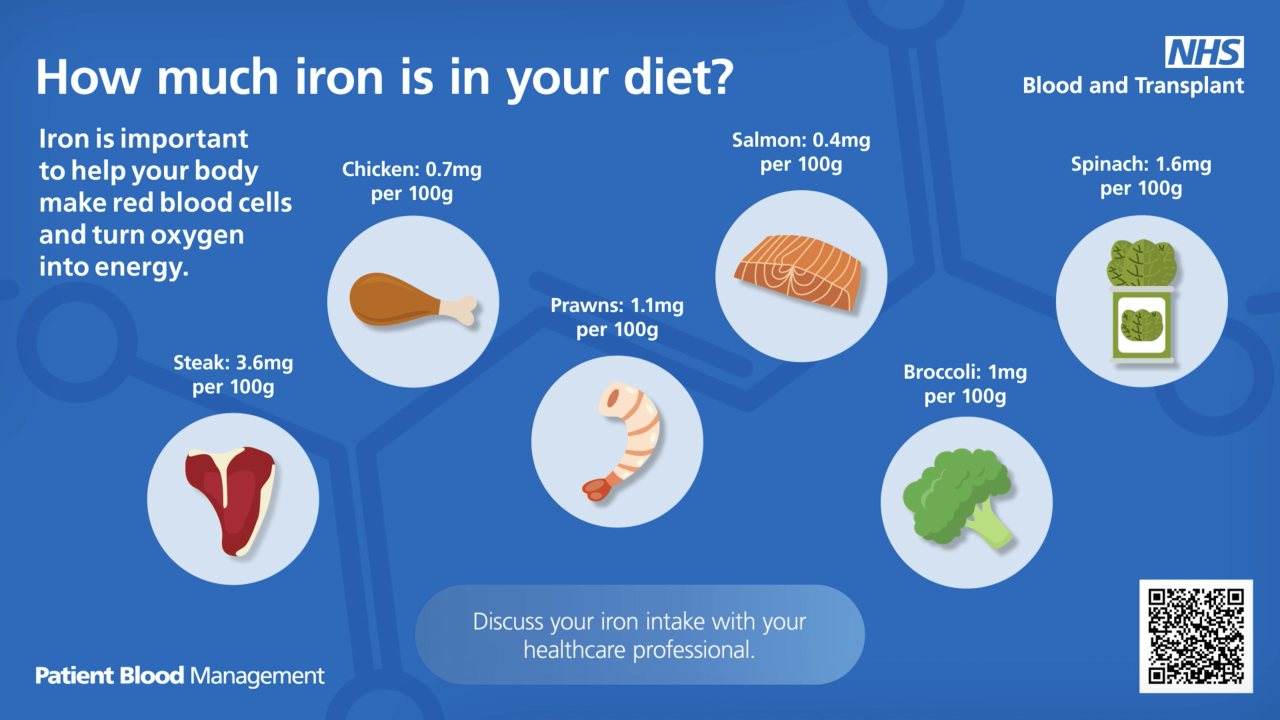
Text reads: "How much iron is in your diet?
Iron is important to help your body make red blood cells and turn oxygen into energy.
- Chicken: 0.7mg per 100g
- Prawns: 1.1mg per 100g
- Salmon: 0.4mg per 100g
- Spinach: 1.6mg per 100g
- Steak: 3.6mg per 100g
- Broccoli: 1mg per 100g
Discuss your iron intake with your healthcare professional."
Women and anaemia
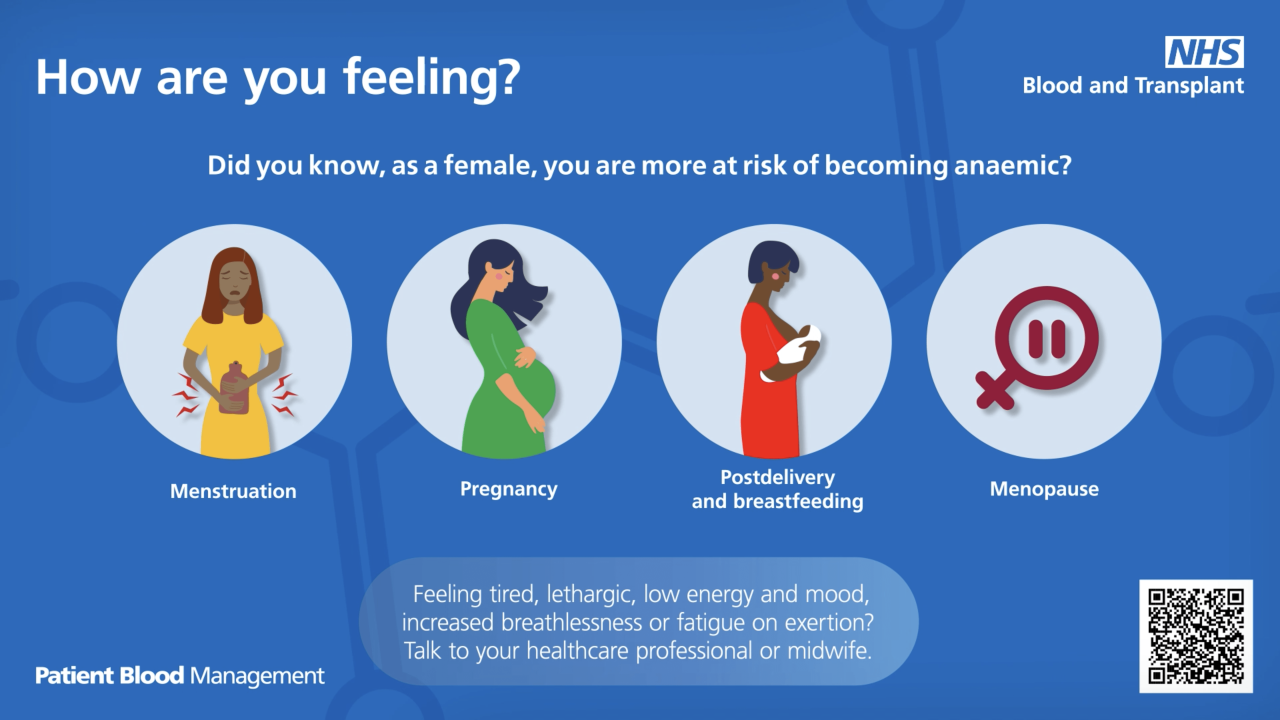
Text reads: "How are you feeling?
Did you know, as a female, you are more at risk of becoming anaemic?
- Menstruation
- Pregnancy
- Postdelivery and breastfeeding
- Menopause
Feeling tired, lethargic, low energy and mood, increased breathlessness or fatigue on exertion? Talk to your healthcare professional or midwife."
Chronic illness
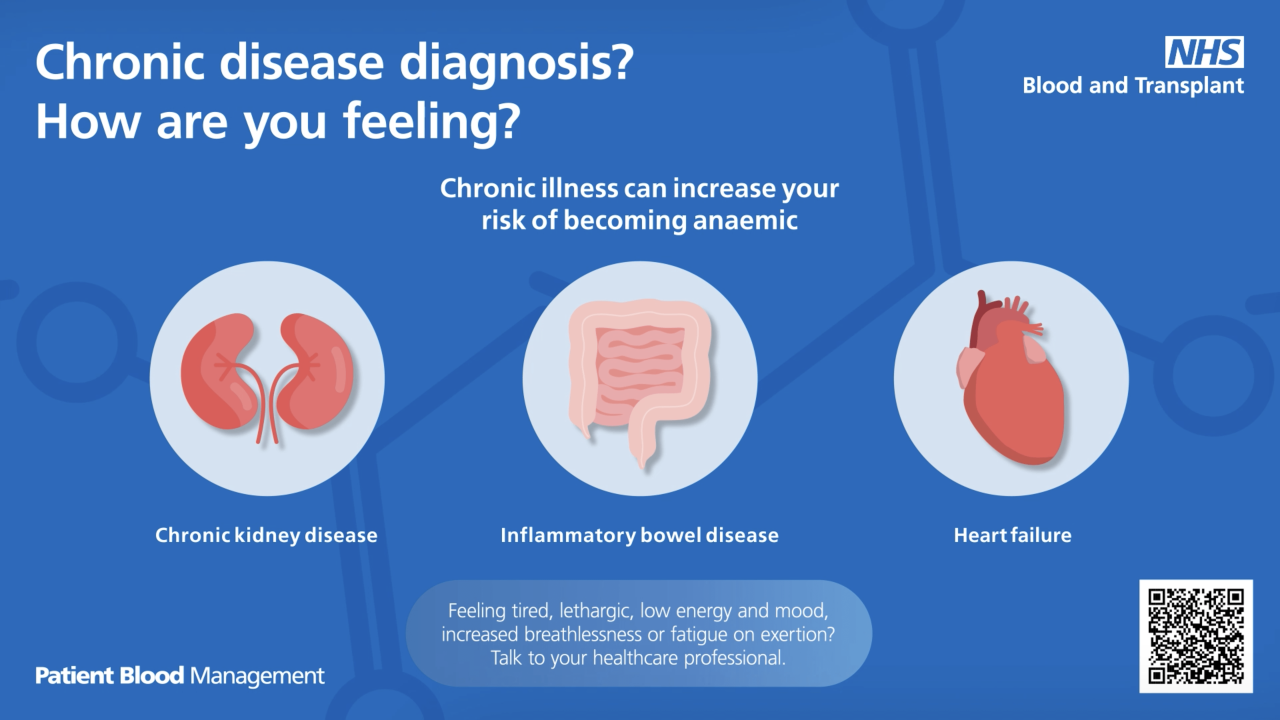
Text reads: "Chronic disease diagnosis? How are you feeling?
Chronic illness can increase your risk of becoming anaemic.
- Chronic kidney disease
- Inflammatory bowel disease
- Heart failure
Feeling tired, lethargic, low energy and mood, increased breathlessness or fatigue on exertion? Talk to your healthcare professional."
Download the chronic disease diagnosis infographic (PDF 203KB)
Anaemia symptoms
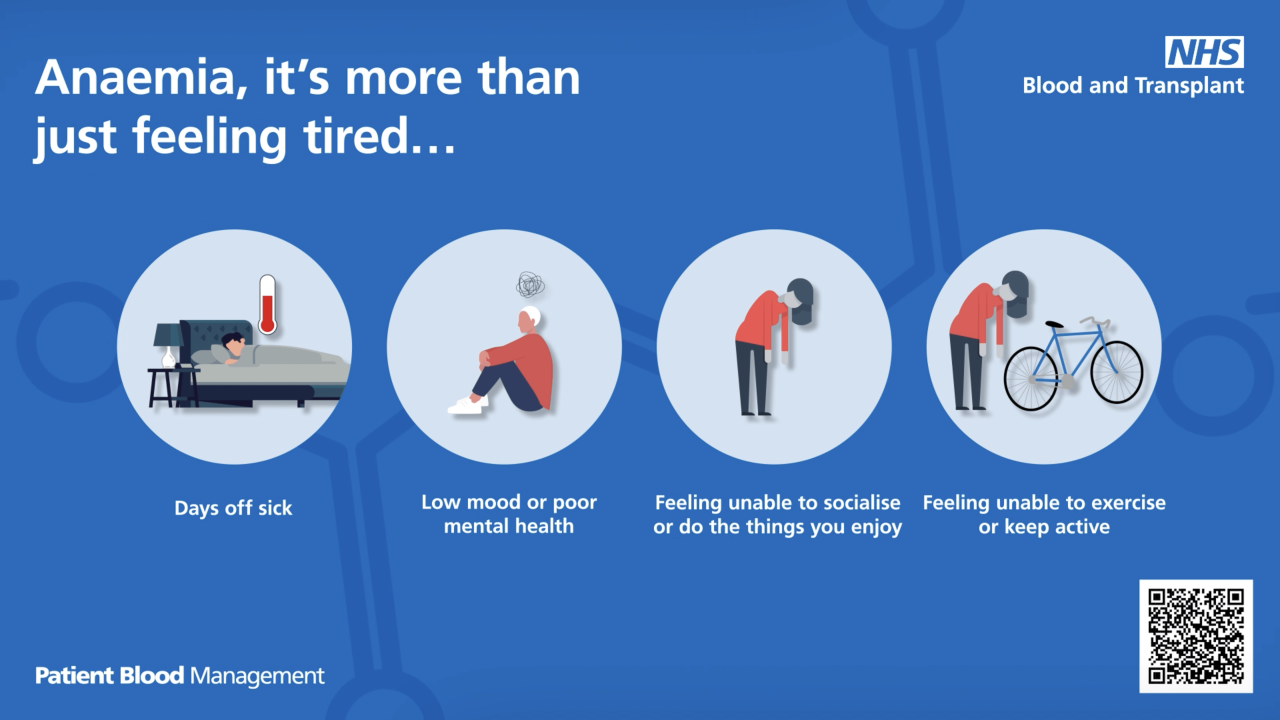
Text reads: "Anaemia, it’s more than just feeling tired...
- Days off sick
- Low mood or poor mental health
- Feeling unable to socialise or do the things you enjoy
- Feeling unable to exercise or keep active"
Anaemia and pregnancy
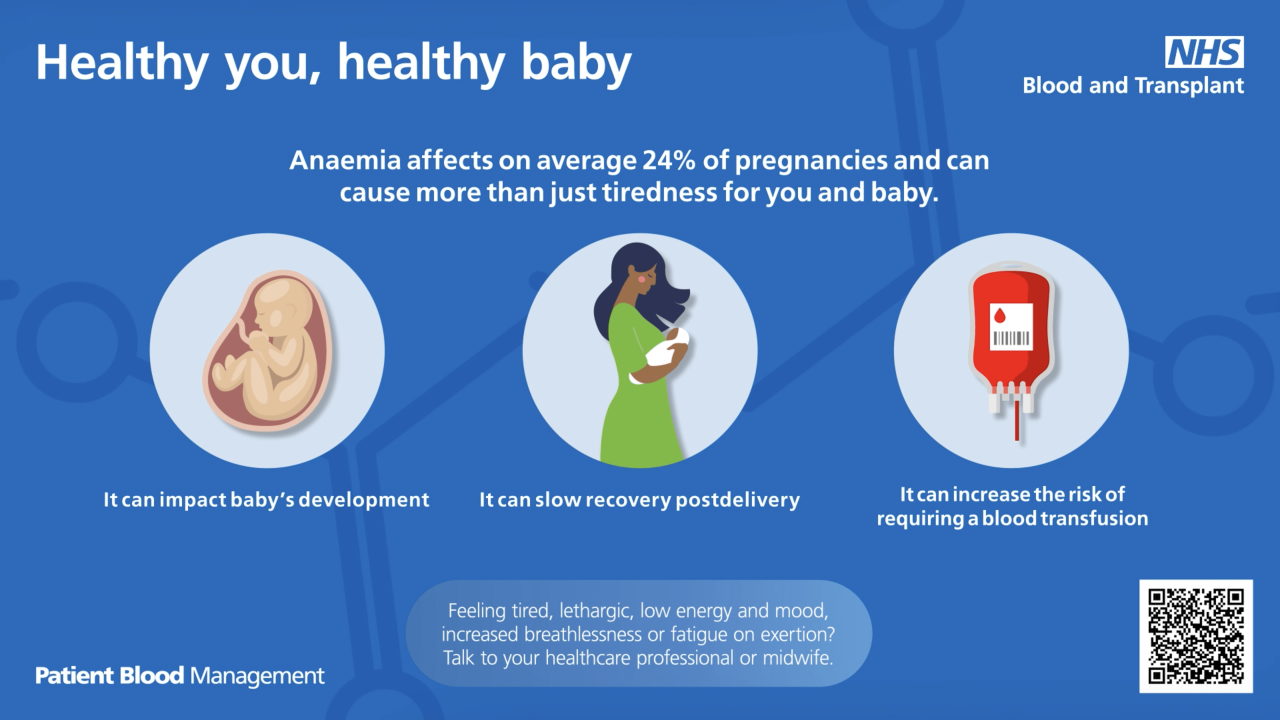
Text reads: "Healthy you, healthy baby
Anaemia affects on average 24% of pregnancies and can cause more than just tiredness for you and baby.
- It can impact baby’s development
- It can slow recovery postdelivery
- It can increase the risk of requiring a blood transfusion
Feeling tired, lethargic, low energy and mood, increased breathlessness or fatigue on exertion? Talk to your healthcare professional or midwife."
Do you have iron deficiency anaemia?
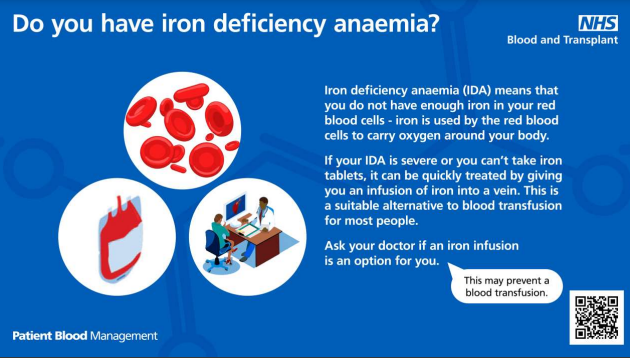
Text reads: "Do you have iron deficiency anaemia?
Iron deficiency anaemia (IDA) means that you do not have enough iron in your red blood cells – iron is used by the red blood cells to carry oxygen around your body.
If your IDA is severe or you can’t take iron tablets, it can be quickly treated by giving you an infusion of iron into a vein. This is a suitable alternative to blood transfusion for most people.
Ask your doctor if an iron infusion is an option for you. This may prevent a blood transfusion."
Download the iron deficiency anaemia infographic (PDF 688 KB)
Does your patient have iron deficiency anaemia?
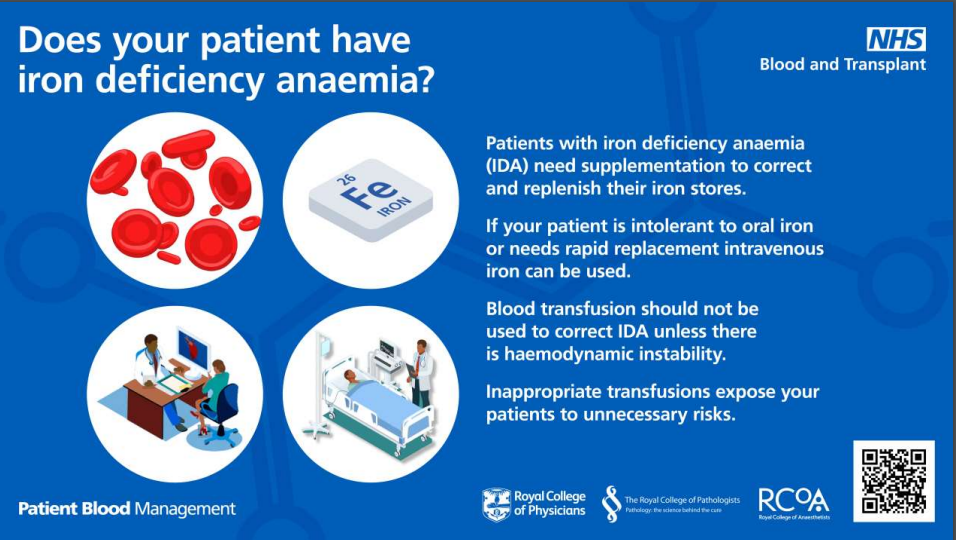
Text reads: "Does your patient have iron deficiency anaemia?
Patients with iron deficiency anaemia (IDA) need supplementation to correct and replenish their iron stores.
If your patient is intolerant to oral iron or needs rapid replacement intravenous iron can be used.
Blood transfusion should not be used to correct IDA unless there is haemodynamic instability.
Inappropriate transfusions expose your patients to unnecessary risks."
Download the iron deficiency anaemia infographic for clinicians (PDF 706 KB)
Share your learning
Tell us about your projects for iron deficiency, highlighting your successes or where things didn't go so well, and we'll include them on this page.
Please email the Patient Blood Management team at pbm.team@nhsbt.nhs.uk
Page last reviewed: 10 February 2025
